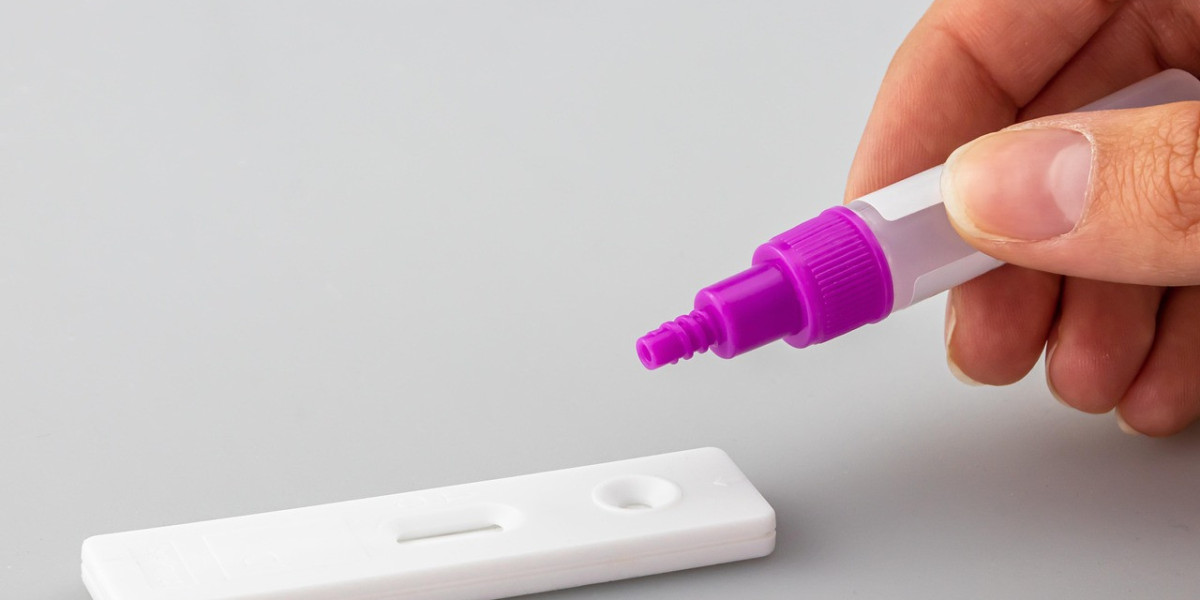The In vitro diagnostics test kit market is increasingly shaped by its underlying technologies, each defining specific test capabilities, accuracy levels, speed, and cost structure. Understanding the various technology segments in IVD test kits is critical for manufacturers, healthcare providers, and investors as they evaluate trends, opportunities, and innovation pathways. The following technology-focused overview explores the most significant platforms driving the current and future landscape of diagnostic testing.
1. Immunoassay-Based Testing
Immunoassays remain one of the most widely adopted diagnostic technologies due to their balance of reliability and scalability. Formats include ELISA, chemiluminescence (CLIA), and fluorescence-based detection systems.
Applications: Detection of hormones, tumor markers, cardiac biomarkers (e.g. troponin), infectious disease antibodies (e.g. hepatitis, HIV), and autoimmune markers.
Strengths: High sensitivity, well-established workflows, and compatible with high-throughput lab analyzers. Immunoassays also serve as backbone revenue generators in hospitals and reference labs due to regular testing volumes.
2. Molecular Diagnostics
Molecular platforms continue to expand rapidly, applying nucleic acid detection (DNA/RNA) to identify pathogens, mutations, and biomarkers. Technologies include PCR (quantitative, digital, real-time), isothermal amplification methods, and next-generation sequencing (NGS).
Applications: COVID‑19, tuberculosis, HPV screening, cancer mutation profiling, antimicrobial resistance panels, and inherited genetic tests.
Strengths: Ultra-sensitivity and specificity, capacity for multiplexing, and ability to detect multiple targets in a single run. These are critical in personalized medicine and pathogen surveillance.
3. Clinical Chemistry Assays
Clinical chemistry focuses on measuring biochemical analytes ( glucose, lipids, liver enzymes, electrolytes) in blood and other body fluids via spectrophotometry and photometry systems.
Applications: Metabolic panels, cardiovascular risk evaluation, kidney/liver function tests, diabetes monitoring, and body fluid analysis.
Strengths: Highly automated, cost-effective per test, and essential for routine diagnostics in hospitals and clinical labs.
4. Hematology & Coagulation
This technology segment includes automated analyzers and consumable cartridges evaluating blood cells (CBC) and clotting markers (PT, aPTT, D‑dimer).
Applications: Anemia screening, leukemia diagnostics, platelet function, and anticoagulant therapy monitoring.
Strengths: Core diagnostic capability for emergency and hospital settings. Highly reliable, rapid, and cost-efficient.
5. Microbiology & Syndromic Panels
Microbiology test kits include culture-based assays, antibiotic susceptibility systems, and MALDI‑TOF analysis, along with multiplex molecular panels for syndromic diagnosis.
Applications: Respiratory infections, UTIs, bloodstream infections, STIs, and hospital-acquired pathogens.
Strengths: Rapid syndromic testing saves time and improves treatment decision-making. Growing demand for antimicrobial resistance detection boosts adoption.
6. Point-of-Care Testing (POCT)
Point-of-care technologies include lateral flow immunoassays, cartridge-based or handheld molecular systems, and portable analyzers.
Applications: Glucose monitoring, pregnancy tests, infectious disease rapid tests, cardiac markers, and drug screening.
Strengths: Fast turnaround (minutes), minimal infrastructure, easy-to-use formats, and usability at bedside, rural clinics, pharmacies, or home settings.
7. Next-Generation Sequencing (NGS)
NGS enables high-throughput and comprehensive genomic analysis, targeting full genomes or specific gene panels.
Applications: Oncology profiling, inherited genetic disorders, cancer recurrence monitoring, and pathogen discovery.
Strengths: Enables multi-gene insights from one assay, supports precision diagnostics, and allows high data throughput per run.
8. CRISPR-Based Diagnostics (Emerging Technology)
This hybrid technology uses CRISPR‑Cas systems programmed to identify specific DNA or RNA sequences, typically paired with fluorescence or lateral flow readouts.
Applications: Rapid detection of infectious agents (viruses, bacteria), genetic mutations, and point-of-care testing where programmability is valuable.
Strengths: High specificity, potential for low-cost, portable formats, and rapid assay development against emerging pathogens.
9. Biosensors & Wearable Diagnostics
Biosensors integrate biochemical sensing with electronic readouts, focusing on continuous monitoring or wearable formats.
Applications: Glucose, lactate, cardiac biomarkers, or wellness metrics, often tied to mobile apps or cloud platforms.
Strengths: Real-time data, remote patient monitoring, personalized health management, and seamless integration with telehealth platforms.
Comparative Technology Insights
Immunoassays and clinical chemistry dominate in volume and reliability, serving core lab demand.
Molecular diagnostics and NGS lead in high-growth, high-margin segments focused on precision, oncology, and infectious disease surveillance.
POCT and home testing cater to convenience and evolving consumer demand for decentralization—especially post-pandemic.
Emerging technologies like CRISPR and biosensors are still early-stage but represent disruptive opportunities for decentralized and rapid diagnostics.
Future Outlook & Strategic Considerations
Molecular and syndromic assay growth will continue as personalized medicine expands and surveillance systems mature.
POCT innovation will accelerate with smartphone-based readers, digital connectivity, and app integration.
Lab workflows will increasingly integrate multi-platform instrumentation capable of switching between immunoassays, chemistry, and molecular workflows.
Regulatory frameworks will evolve to cover emerging formats like CRISPR, NGS, and digital diagnostics, supporting global adoption.
Value chain strategies will emphasize bundled offerings (instruments, consumables, software, analytics) to enhance recurring revenues.
Conclusion
Technology segmentation in the In Vitro Diagnostics Test Kit Market presents a diversified landscape that supports both traditional diagnostic workflows and emerging innovations. Immunoassays and clinical chemistry provide high-volume foundation, while molecular, POCT, and emerging platforms fuel the next wave of growth. As healthcare systems evolve to be more personalized, decentralized, and digital, stakeholders aligning investments and portfolio strategies with these technology drivers will be best placed to lead in this dynamic and competitive market.








